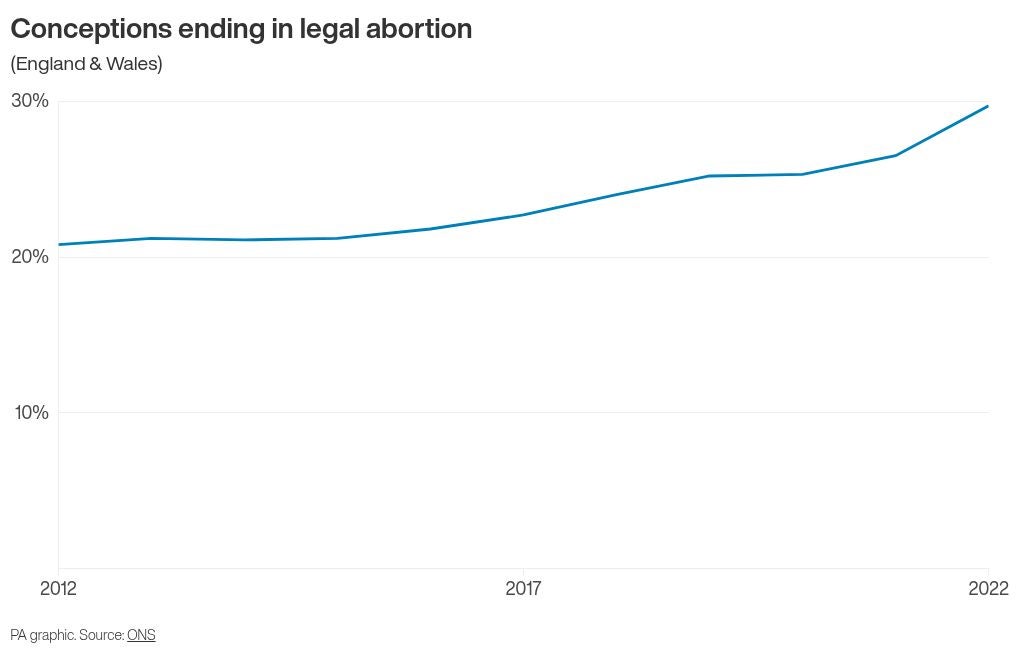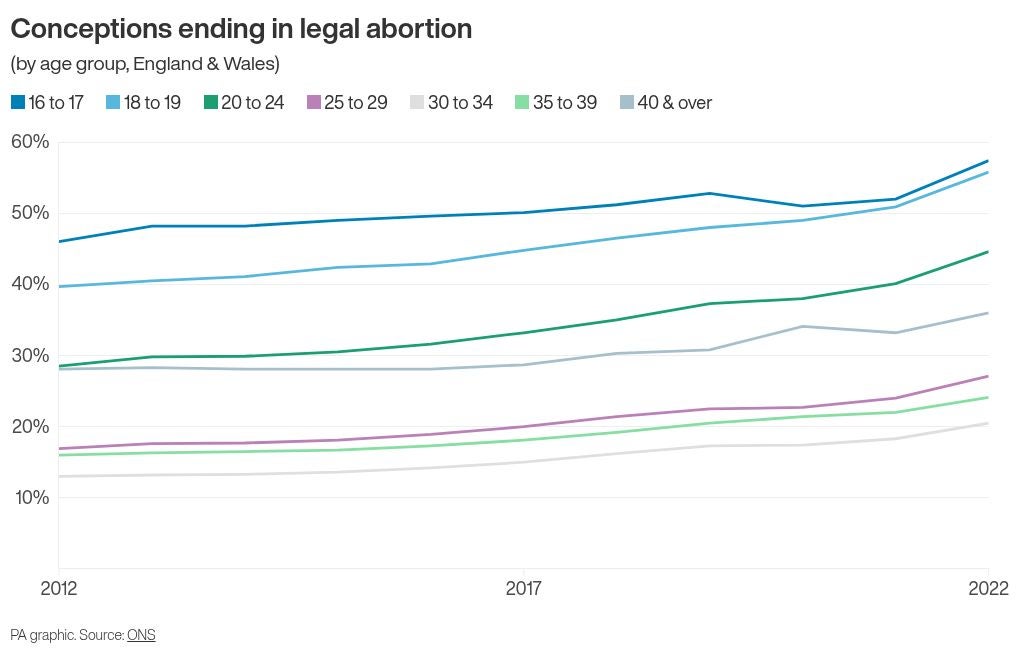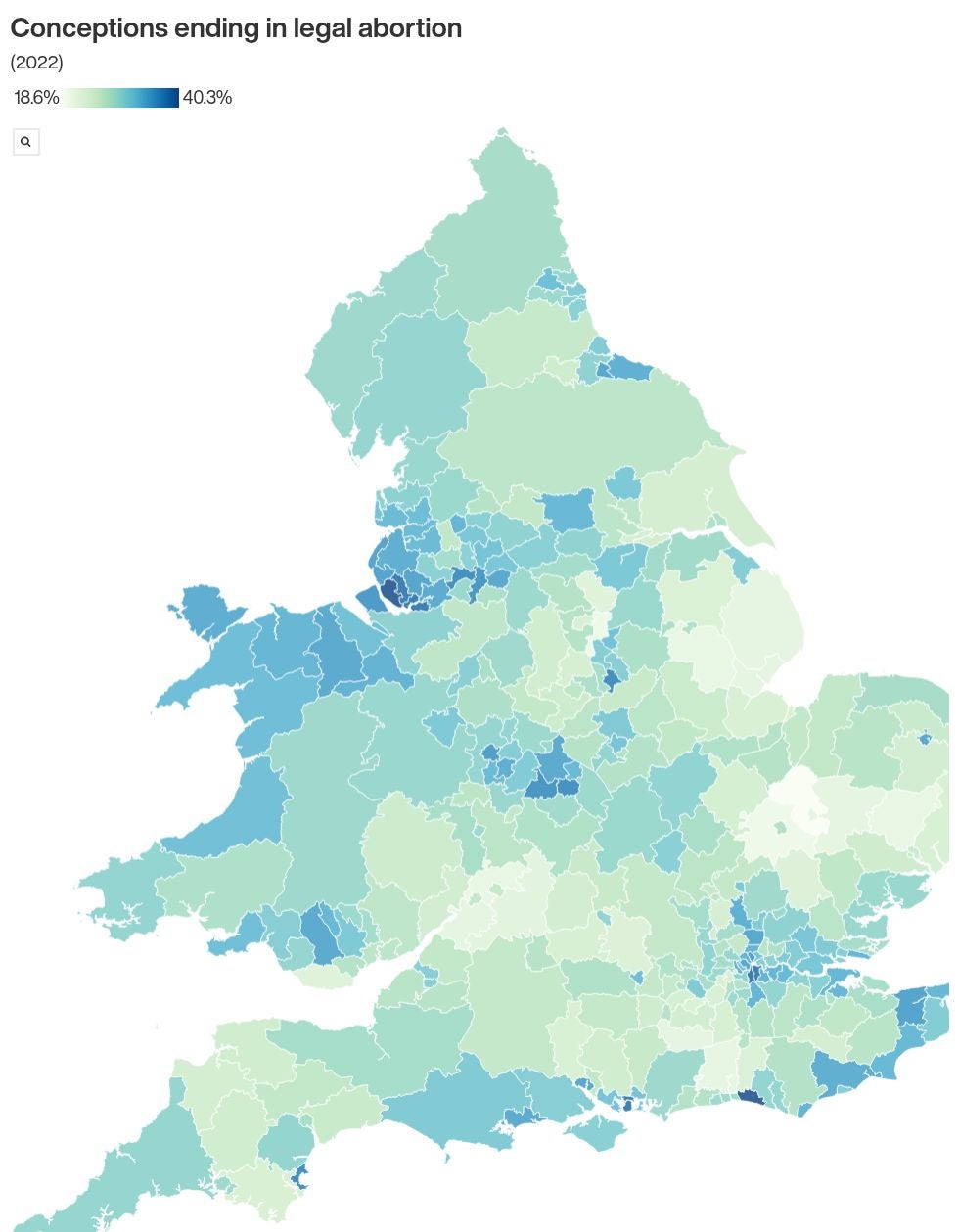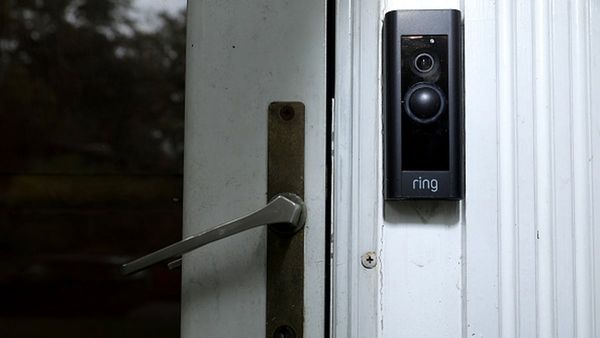Legal abortions in England and Wales now account for a record high proportion of conceptions, with official statistics revealing almost three in 10 pregnancies ended this way in 2022.
The Office for National Statistics (ONS) reported the figure stood at 29.7 per cent in 2022, a rise from 26.5 per cent a year earlier and 20.8 per cent in 2012.
This percentage has generally been increasing across all age groups since 2015, the statistics body confirmed.

There were 247,703 conceptions leading to a legal abortion in 2022, a 13.1% rise on the 218,923 recorded in 2021.
Figures published last year by the Government showed the number of abortions in 2022 for women living in England and Wales was at a record level – at 251,377.
The ONS said its data is based on the estimated date of conception, while Department of Health and Social Care (DHSC) figures are based on the date of the abortion, leading to a difference in the overall numbers.
The British Pregnancy Advisory Service (Bpas) said lengthy waiting times for some forms of contraception as well as financial struggles faced by many could explain the rise.
Girls aged under 16 remained the age group with the highest percentage of conceptions leading to abortion, at 61.0%.
Women aged between 30 and 34 years old had the lowest percentage of conceptions leading to abortion in 2022, at around a fifth or 20.5%.
The age group with the highest number of conceptions was women in their early 30s, at 249,991.
Women aged over 40 years had a conception rate of 17.2 per 1,000 women in 2022, slightly below the record high of 17.3 per 1,000 women in 2021, the ONS said.

Katherine O’Brien, from the British Pregnancy Advisory Service (Bpas), said women are facing “significant barriers” in access to contraception, including long waiting times and difficulties securing appointments.
She added: “At Bpas, we regularly hear from women who are seeking an abortion after falling pregnant while waiting for repeat Pill prescriptions or coil insertions.
“Emergency contraception, while not a silver bullet to unplanned pregnancy rates, remains an underutilised resource in this country, with the majority of women not accessing this vital back-up method after an episode of unprotected sex.
“The Government has committed to improving access via pharmacies, but we need to see this medication reclassified so that it can be sold in a wider range of outlets, including supermarkets, so that women can access it as swiftly as possible when needed.”
She also noted interest rate hikes and increases in cost of living in 2022, which she said might have led to women and their partners having to make “sometimes tough decisions around continuing or ending a pregnancy”.
She added: “No woman should have to end a pregnancy she would otherwise have continued purely for financial reasons, and no woman should become pregnant because our healthcare system is failing to provide women with the contraception they want, when they need it.”

Caroline Ansell, from the charity Christian Action Research and Education (Care) described the figures as “heartbreaking” and that it is “especially painful” if poverty is a driving factor.
Ms Ansell said: “The scale of abortion in England and Wales is heartbreaking for those who recognise that every life, no matter how tiny, is precious.
“Behind these statistics are women whose stories of trauma and regret are rarely heard in public debate. Understanding that poverty can be a driving factor is especially painful.
“A just and compassionate society provides support so that women can carry their babies to term, then care for their children as they grow and develop.”
The proportion of conceptions ending in legal abortion in 2022 varied in different parts of the country, the data shows.
Across all age groups, the figure was highest in north-west England (32.6%) and lowest in eastern England (27.3%).
But the gap was much larger among younger age groups, with the figures for 16-17 year-olds ranging from 48.2% of conceptions in Yorkshire/Humber to 66.2% in London.
Among 18-19 year-olds, the proportion ranges from 48.1% of conceptions in north-east England to 62.6% in London.
The lowest regional percentages were in the 30-34 age group, where the figure dipped as low as 18.5% for eastern England and 18.0% for south-west England.
At a local level, Liverpool and Brighton & Hove had the joint highest proportion of conceptions ending in legal abortion in 2022 across all ages (40.3%), followed by the London borough of Lambeth (38.4%) and Halton in Cheshire (38.1%).
East Cambridgeshire had the lowest percentage (18.6%), followed by South Cambridgeshire (20.0%), Bolsover in Derbyshire (20.2%) and Mid Suffolk (21.0%).
The DHSC statistics, published last year, showed the figure of 251,377 abortions for women living in England and Wales in 2022 had risen by almost a fifth in a year.
This was the highest number since the Abortion Act was introduced almost 60 years ago and was a rise of 17% on the 2021 figure, the department said.
Taking medications at home, known as telemedicine, was the most common procedure, accounting for 61% of all abortions in 2022.
This was up nine percentage points since 2021, the DHSC said.
Temporary measures put in place during the pandemic approving the use of both pills for early medical abortion at home, without the need to first attend a hospital or clinic, were made permanent in England and Wales in 2022.
Temperatures to rise ‘day by day’ through the week, say Met Office
Government told to fully fund teacher pay rise to prevent school provision cuts
Jury trials ‘always important’ part of justice system amid court reform shake-up
‘Who do they think they are?’ Readers clash over NHS doctor strikes
Doctors announce five-day strike over pay dispute
Gemma Collins’s weight loss jab Instagram ad banned by watchdog







